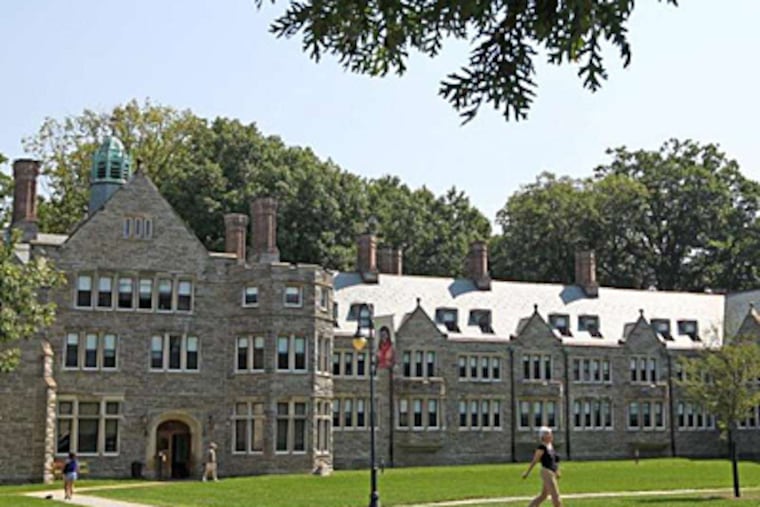Swarthmore, Bryn Mawr named as top colleges for renewable energy use in U.S.
Swarthmore and Bryn Mawr are among the top colleges in the U.S. for embracing renewable energy, according to a report by Environment America and PennEnvironment.

Swarthmore and Bryn Mawr are among the top colleges in the United States in embracing renewable energy, according to a report by PennEnvironment.
Both schools get all of their electricity through renewable sources, largely by purchasing renewable energy credits (RECs), which allow institutions to purchase renewable power generated on their behalf. Swarthmore, in Delaware County, ranks seventh on the list; Bryn Mawr, in Montgomery County, ranks 42nd.”
“Campus communities are leading the charge,” said David Masur, director of PennEnvironment. “Campuses are making everyday decisions that reflect their values. They care about climate change and renewable energy.”
The report was compiled by Environment America and Frontier Group on behalf of PennEnvironment and relied on Environmental Protection Agency-supplied data.
Aurora Winslade, director of sustainability at Swarthmore, said the college has been buying the renewable energy credits since 1999. But the school is now looking at creating its own energy onsite by erecting solar panels on up to 20 buildings that could generate up to 2,000 megawatt hours per year of electricity.
“We want to generate as much onsite as possible,” Winslade said.
Swarthmore is also looking to arrange an agreement to purchase power directly from an offsite renewable energy facility.
The campus powers heating and air-conditioning by natural gas but is also looking to electrify as much as possible because that can be fed directly by wind or solar. The school has already installed some geothermal units and hopes to install more. And it has broken ground on a “net zero” dining hall that’s designed to reduce as much in carbon dioxide emissions as it produces.
» READ MORE: These college conservatives say climate change is real. Now, to convince their elders
Bryn Mawr similarly began purchasing renewable energy credits years ago, and by 2015 had obtained 100% of its electricity from renewable energy sources. The school also has dropped its gross emissions by more than half since 2008 through energy saving methods.
The report said that of 127 colleges that reported data to the EPA’s Green Power Partnership program, 42 meet 100% of their electricity needs with renewable energy generated onsite, through power purchase agreements, or with RECs.
A REC is a market-based instrument that is produced when a megawatt of electricity is generated through a renewable source. The source sends that electricity, say 10 megawatt hours (MWh), to the electric grid. A business or institution a thousand miles away can buy those 10 RECs. They can then tell customers or, in this case, students that the energy came from a renewable source, even though the power was not delivered directly to the institution. By purchasing RECS, they support renewable energy.
Georgetown University leads all schools, generating and purchasing more than 1.3 times as much electricity from renewable sources as it consumes.
“America’s colleges and universities are leading the transition to a 100% renewable energy system,” the report states. “Small liberal arts colleges, large public universities and community colleges alike, from every corner of the U.S., are taking the lead in reducing energy consumption, deploying renewable energy technologies, and switching to electric vehicles (EVs).”
The authors say the most direct way campuses can encourage renewable energy is by installing wind turbines, solar panels or other forms of renewable energy on campuses. One of the most ambitious schools as been Butte, a California community college that generates nearly 80% of its own electricity.
Many campuses on the report’s list, however, still use fossil-fuel fired boilers. The authors note schools like Swarthmore are looking to switch to geothermal systems that draw from the ground to provide heating and cooling.
In addition, it notes campuses are also embracing the use of electric vehicles, especially in California.
“As centers for research and innovation, and the institutions training the leaders of tomorrow, colleges and universities are well positioned to lead this transformation,” the authors wrote.